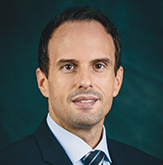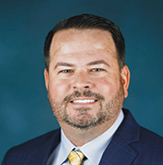Productive conversations to have for better utilization & cost savings

Leaders at healthcare facilities recognize that physician engagement in product utilization ensures optimal patient outcomes while leading to savings. HealthTrust’s Medical Device Management (MDM) Team has learned that sharing data from their proprietary SurgIntel Analytics software is an effective way to engage physicians and reduce costs.
What drives product preference?
Adam Bruggeman, M.D., and Matthew Willis, M.D., both HealthTrust Physician Advisors, explain that many factors drive physician product preferences. Some of those factors include:
- Physicians want to use products they are familiar & comfortable with
- Suppliers & their sales reps build influential relationships with physicians
- Some physicians have a personal financial stake in particular products

Drs. Bruggeman and Willis note that some of those factors are more easily overcome than others—a physician who has developed a device isn’t likely to want to use a different one, for example.
But having “open, reasonable dialogue” with physicians and being transparent about cost-per-case product and device costs, reimbursements, actual margins, and the clinical data around similar products and devices will go a long way toward being able to begin a discussion with them about the possibility of making some changes.
Show them the data
“Data is key to decision-making,” says Dr. Willis. “I think it’s harder for a physician to justify utilization of an implant, for example, if there is not a statistically meaningful clinical benefit. “Physicians are more likely to recognize that when presented with the data, as opposed to having somebody just tell them, ‘Hey, you need to use implant B instead of implant A.’ ”

However, data is not always shared. It is not uncommon for physicians to be unaware of the costs of the devices and products they use, or how their utilization of those devices and products compares to that of their peers. “I worked with one physician who said in his 25 years of practice, he’d never seen his data,” says Brent Ford, HealthTrust’s Senior Director, Medical Device Management. When the MDM Team reveals this data to physicians, it’s often an eye-opening moment for physicians that can spark change, Ford adds.
The MDM Team at work
When Jackie Wright, Supply Chain Leader at Surgery Partners, worked with HealthTrust’s MDM Team on behalf of her former employer, she shared the data and insights from the team with the physicians and administration of the nationwide health system. “It gave us the visibility to have different conversations with our physicians, vendors and administrators,” explains Wright.
“That visibility allowed the physicians to say, ‘Wow, I didn’t realize I was being charged that every time,’ ” Wright adds. “Once they saw the cost implications, they would work with their vendor partners to come up with different options for patient use that would give them the same outcomes.”

Hands down, the most beneficial thing was the depth of information the MDM Team provides, Wright explains. “It allowed us to see the data differently than you would from just pulling raw data and trying to look at cost alone or by physician. They’re putting the procedure in the correct category for you.”
HealthTrust’s MDM Team utilizes a sophisticated approach to derive valuable implant utilization insights from the various clinical and financial records. By employing a combination of procedural coding and proprietary implant algorithms developed and refined over years, the team is able to accurately determine the specific medical devices and supplies used in individual procedures. As Chris J. Stewart, VP of Medical Device Management at HealthTrust, puts it, “What makes us unique is the translation of that information.” This translation process involves converting complex and unstructured data into actionable information, enabling better decision-making and optimization of medical device management.

“We speak their language,” adds Scott Driskell, HealthTrust’s Clinical Director, Medical Device Management. The MDM Team doesn’t just present physicians with a one-and-done data dump, Stewart and Driskell explain. Instead, the team uses that data to begin a two-way conversation with them about their utilization and spend, and compares it to their peers’ utilization and spend—all in the context of providing the best clinical care.
“SurgIntel’s medical device implant database has the potential to revolutionize healthcare decision-making. By integrating vast data and advanced analytics, we provide comprehensive, tailored insights for providers. Empowering health systems and physicians with personalized cost-per-case information could optimize implant selection, eliminate unnecessary variation and lead to improved patient outcomes. These advancements in data analytics are reshaping healthcare delivery,” says Stewart.

As compelling as the data is, Dr. Bruggeman cautions the administrators who share the data with their physicians for the sole purpose of getting them to change their usage. They may find their efforts backfiring.
“If every time you come to show me numbers, you tell me something negative or that I’ve got to change something, I’m immediately going to be less open and responsive to anything you want to say, even if it makes sense,” Dr. Bruggeman points out. “Break down what physicians may perceive as potentially negative communication by using data to show what we’re doing well, encourage good behavior, and show the data quarterly. With that approach, you can eventually have that conversation about changing utilization.”
Learn more by contacting the MDM Team at corp.medicaldevicemgmt@healthtrustpg.com. Or, if attending HTU in Orlando, visit the MDM Team in the HealthTrust Village for a demo.
Share Email Medical Devices, On-contract service, Q3 2024, Savings




